C#WinForm实现多语言切换的示例
晚风偷吻云朵 人气:0因项目需要,所以在网上找了一些方法实现了该功能,本文也是做一个总结和记录。使用resx文件实现Winform多语言切换,以实现简体中文、英文、泰语的切换为例。如果后续需要增加其它语言的切换,只需要按照步骤重复操作即可。
效果图如下:
中文:
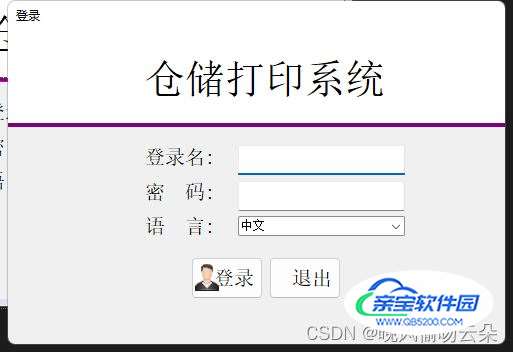
英语:
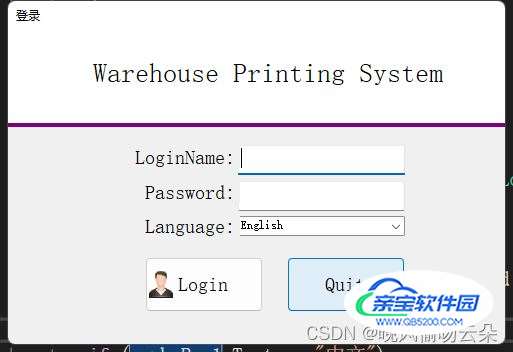
泰语:

窗体设置
下面来说一下流程:
1.首先将Form1的 Localizable 属性为 true( 设置该属性后,.net 将根据不同的语言,为应用程序生成不同的资源文件),然后将Language属性设置为所需要的语言,如下所示。
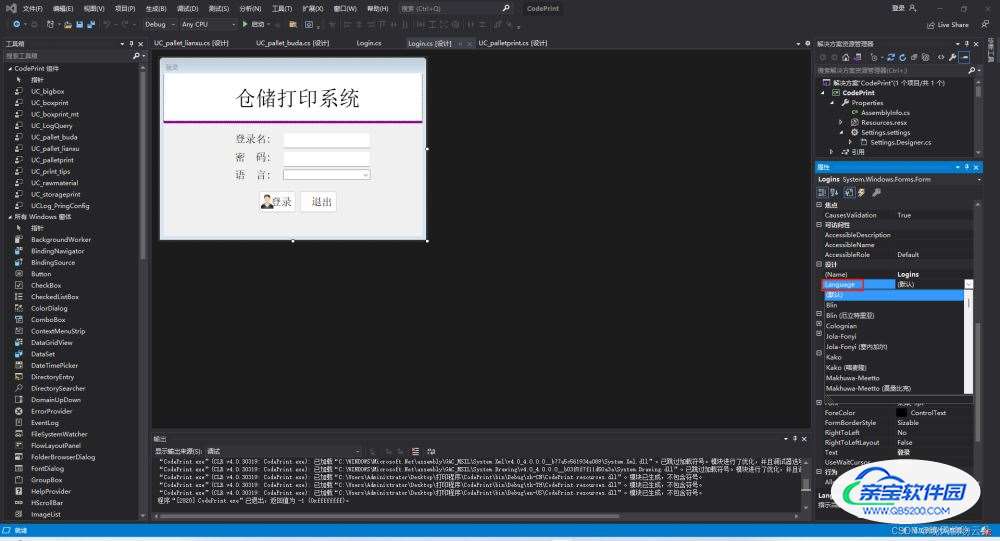
2.当把Language属性设置成例如英语后,那么我们对窗体中的控件名称进行调整,如下图:
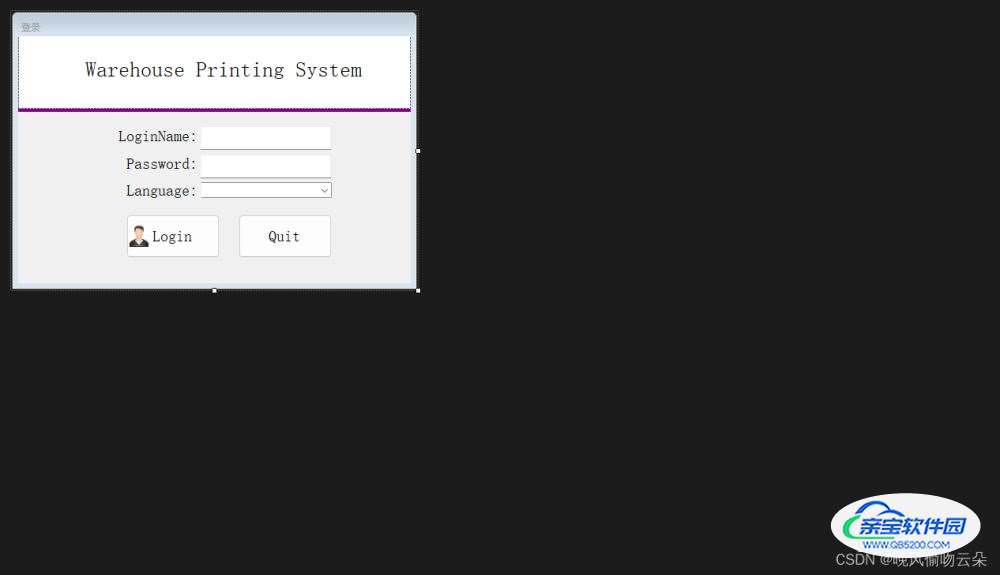
别的语言也是这种操作,只是拿英语做个示例。当我们把页面调整完后,我们重新生成一下,然后再把上述Language属性切回到默认或汉语时,再把项目重新生成一下。这样的话,语言文件就会自动生成好了。


注意:一定要重新启动一下,不然改过之后直接运行不会出现语言文件!
当我们把窗体的设置全部搞定后,我们来看怎么设置自动切换,如图所示,我是在登录页面就放了一个下拉框,当选中语言时,所有窗体的语言会自动切换,接下来我们看一下实现方法。
实时语言切换
1.项目的Properties的Settings.settings中添加变量DefaultLanguage,用于保存当前设置的默认语言。当下次启动程序时,会读取该变量,从而将程序的语言设置为上次程序关闭时的语言。第一次将默认语言设置为中文zh-CN。
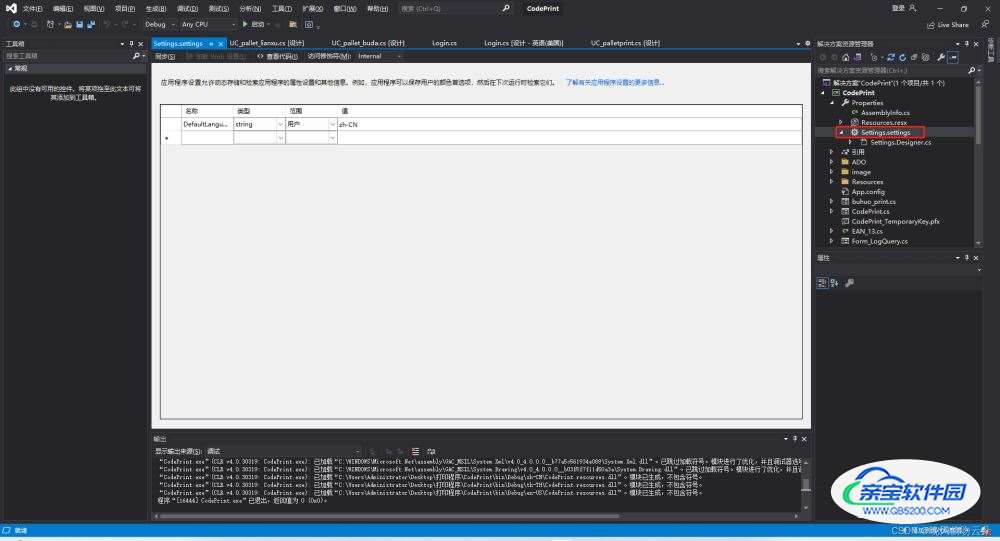
2.创建一个静态类(MultiLanguage.cs)用于编写与切换语言相关的变量和代码。
using System;
using System.Collections.Generic;
using System.Linq;
using System.Text;
using System.Threading.Tasks;
using System.Windows.Forms;
namespace CodePrint
{
//用于编写与切换语言相关的变量和代码
class MultiLanguage
{
//当前默认语言
public static string DefaultLanguage = "zh-CN";
/// <summary>
/// 修改默认语言
/// </summary>
/// <param name="lang">待设置默认语言</param>
public static void SetDefaultLanguage(string lang)
{
System.Threading.Thread.CurrentThread.CurrentUICulture = new System.Globalization.CultureInfo(lang);
DefaultLanguage = lang;
Properties.Settings.Default.DefaultLanguage = lang;
Properties.Settings.Default.Save();
}
/// <summary>
/// 加载语言
/// </summary>
/// <param name="form">加载语言的窗口</param>
/// <param name="formType">窗口的类型</param>
public static void LoadLanguage(Logins form, Type formType)
{
if (form != null)
{
System.ComponentModel.ComponentResourceManager resources = new System.ComponentModel.ComponentResourceManager(formType);
resources.ApplyResources(form, "$this");
Loading(form, resources);
}
}
/// <summary>
/// 加载语言
/// </summary>
/// <param name="control">控件</param>
/// <param name="resources">语言资源</param>
private static void Loading(Control control, System.ComponentModel.ComponentResourceManager resources)
{
if (control is MenuStrip)
{
//将资源与控件对应
resources.ApplyResources(control, control.Name);
MenuStrip ms = (MenuStrip)control;
if (ms.Items.Count > 0)
{
foreach (ToolStripMenuItem c in ms.Items)
{
//遍历菜单
Loading(c, resources);
}
}
}
foreach (Control c in control.Controls)
{
resources.ApplyResources(c, c.Name);
Loading(c, resources);
}
}
/// <summary>
/// 遍历菜单
/// </summary>
/// <param name="item">菜单项</param>
/// <param name="resources">语言资源</param>
private static void Loading(ToolStripMenuItem item, System.ComponentModel.ComponentResourceManager resources)
{
if (item is ToolStripMenuItem)
{
resources.ApplyResources(item, item.Name);
ToolStripMenuItem tsmi = (ToolStripMenuItem)item;
if (tsmi.DropDownItems.Count > 0)
{
foreach (ToolStripMenuItem c in tsmi.DropDownItems)
{
Loading(c, resources);
}
}
}
}
}
}
3.在窗体的Load(双击Form1即可跳转至该事件)事件中读取Properties.Settings.Default.DefaultLanguage,并将ComboBox赋值为当前默认语言,即简体中文或英文。
private void Login_Load(object sender, EventArgs e)
{
//设置combobox的值
string language = Properties.Settings.Default.DefaultLanguage;
if (language == "zh-CN")
{
comboBox1.Text = "简体中文(默认)";
}
else if (language == "en-US")
{
comboBox1.Text = "English";
}
else if(language == "th-TH")
{
comboBox1.Text = "ไทย";
}
MultiLanguage.LoadLanguage(this, typeof(Logins));
}
4.编写用于切换语言的ComboBox的SelectedIndexChanged事件,使得当用户选择对应的语言时,程序会切换到该语言。
事件添加方式如下:选中ComboBox,点击事件,在SelectedIndexChanged事件中输入方法名languageTxt_SelectedIndexChanged,按回车即可自动生成。
private void languageTxt_SelectedIndexChanged(object sender, EventArgs e)
{
comboBox1.Enabled = false;
if (comboBox1.Text == "中文")
{
//修改默认语言
MultiLanguage.SetDefaultLanguage("zh-CN");
//对所有打开的窗口重新加载语言
foreach (Form form in Application.OpenForms)
{
LoadAll(form);
}
}
else if (comboBox1.Text == "English")
{
//修改默认语言
MultiLanguage.SetDefaultLanguage("en-US");
//对所有打开的窗口重新加载语言
foreach (Form form in Application.OpenForms)
{
LoadAll(form);
}
}
else if(comboBox1.Text == "ไทย")
{
//修改默认语言
MultiLanguage.SetDefaultLanguage("th-TH");
//对所有打开的窗口重新加载语言
foreach (Form form in Application.OpenForms)
{
LoadAll(form);
}
}
comboBox1.Enabled = true;
}
LoadAll(form)方法:
private void LoadAll(Form form)
{
if (form.Name == "Logins")
{
MultiLanguage.LoadLanguage((Logins)form, typeof(Logins));
}
else if (form.Name == "CodePrint")
{
MultiLanguage.LoadLanguage((Logins)form, typeof(CodePrint));
}
else if(form.Name == "CodePrint")
{
MultiLanguage.LoadLanguage((Logins)form, typeof(CodePrint));
}
}
if里面就是我们可以切换的窗体名称。
加载全部内容